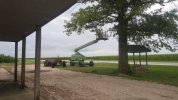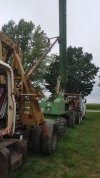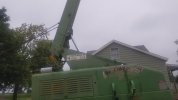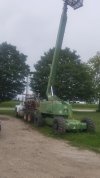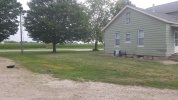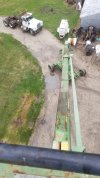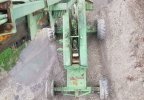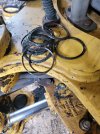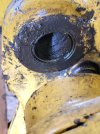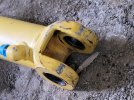Cat and some other manufacturers utilise steel-backed seals to provide articulated pin sealing on loader and bucket and ripper linkages to ensure dirt is kept out of greased areas of pins.
However, it's possible the seals in your machine don't have steel backing, and are merely made out of some type of nylon or teflon or urethane, or other hard-wearing synthetic material.
The idea behind the greased pin seals was to not only keep the greased area of the pin and bushing relatively free from dirt contamination, it was also an idea to reduce the greasing times.
Originally, greasing pins and bushings was a daily chore with a recommended greasing interval of 10 hrs.
But sealed pins and bushings was supposed to reduce greasing intervals to 250hrs. That was all O.K. while there was no wear in the pins, bushings and seals. But wear soon makes the 250 hour greasing interval too long.
You can ensure grease stays in the pin and bushing for longer by fabricating large diameter washers in several thicknesses (out of steel or some type of wear-resisting thermoplastic) and slipping these washers into the gaps between the pin lugs.
You slip into the joint, as many washers of the desirable varying thicknesses, until all the slop between the lugs is taken out.
These washers then act as a close-fitting, labyrinth-style seal, that keeps dirt out of the joint, and the grease in.
It's good to see your pins and bushings have been getting plenty of grease. Way too many operators seeing greasing as a chore to be avoided.
High quality 7K9202 7K9203 Seal Lip Type For Caterpillar Backhoe Loader 422E 428E 432E 434E 442E 444E from China, China's leading 7K9202 Lip Seal product, with strict quality control 7K9203 Lip Seal factories, producing high quality Backhoe Loader 422E Lip Seal products.
www.oilsealkits.com

